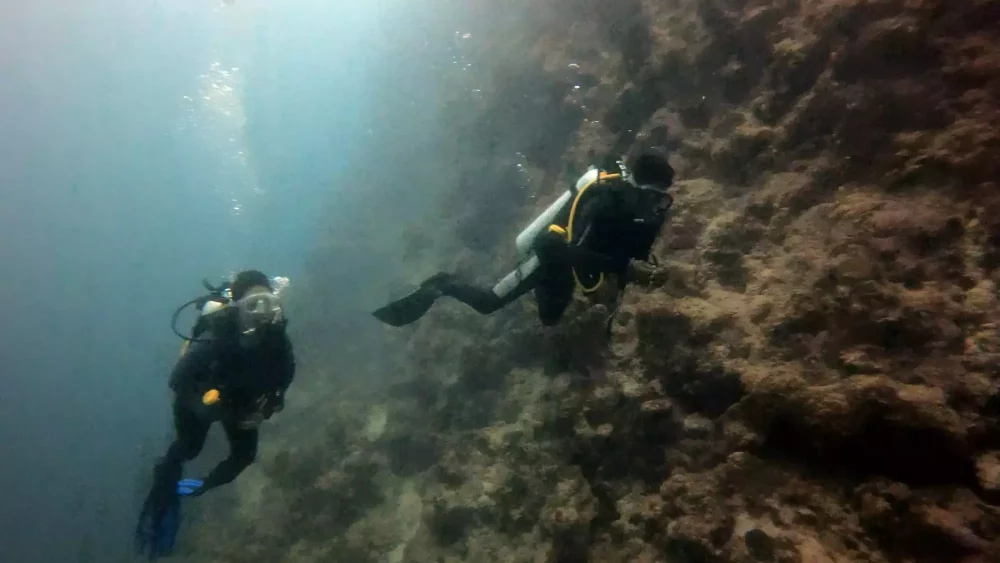Scuba diving offers an unparalleled opportunity to explore the mysteries of the underwater world. As you descend into the depths, your body undergoes a series of remarkable physiological changes to adapt to the underwater environment. Whether you’re an experienced diver preparing for exams, a beginner ready to take the plunge, or simply someone fascinated by the subject, understanding these changes is essential for a safe and enjoyable dive. In this guide, we’ll dive deep into the science of how your body adapts to the deep, from shallow waters to the deepest recreational depths and beyond.
Shallow Water Diving
When you first enter the water, whether it’s a tropical reef or a serene lake, your body adapts to the new environment. Here’s what happens in shallow water:
- Buoyancy Control: You must manage buoyancy by controlling your BCD (buoyancy control device) and weights to remain stable in the water.
- Pressure Changes: As you descend just a few feet, the water pressure increases slightly, leading to a compression of air spaces in your ears and sinuses. Equalization techniques, like swallowing or the Valsalva maneuver, help manage these changes.
Mid-Range Depths
As you dive deeper, typically between 30 to 100 feet, more significant physiological changes occur:
- Nitrogen Narcosis: Also known as “rapture of the deep,” nitrogen narcosis can affect divers. This is a reversible alteration of consciousness that can lead to impaired judgment and coordination. It often subsides when ascending to shallower depths.
- Increased Gas Narcosis: The deeper you go, the more nitrogen you breathe in due to increased pressure. This can intensify nitrogen narcosis. Additionally, helium-based breathing gases can reduce narcosis, which is why technical divers may use helium mixes.
The Deepest Recreational Depths
For recreational divers, the limits are generally set at around 130 feet. Beyond this point, the physiological changes and risks increase substantially:
- Reduced Oxygen: Oxygen levels in the body drop at deeper depths, potentially leading to hypoxia (insufficient oxygen). Technical divers may use gas mixtures with higher oxygen content to mitigate this risk.
- Increased Risk of Decompression Sickness (DCS): Deeper dives result in a greater uptake of nitrogen, which requires careful planning and slow ascents to avoid DCS.
Beyond Recreational Limits
Extending beyond recreational limits requires specialized training and equipment. These dives venture into extreme depths, and further physiological adaptations are necessary:
- Use of Mixed Gases: Beyond recreational depths, divers often use mixed gases, such as trimix or heliox, to manage oxygen toxicity and nitrogen narcosis.
- Extended Decompression: Deeper dives may involve long decompression stops, requiring meticulous planning and strict adherence to safety protocols.
Precautions and Safety Measures
To ensure safety and a successful dive, follow these precautions:
- Proper Training: Technical and deep diving should only be attempted with proper training from certified instructors.
- Dive Planning: Create a detailed dive plan that includes maximum depths, bottom times, and ascent rates.
- Gas Management: Use the appropriate gas mixtures for the depth to avoid hypoxia or oxygen toxicity.
- Buoyancy Control: Maintain neutral buoyancy to avoid barotrauma and uncontrolled ascents or descents.
- Decompression Stops: Adhere to safety stops and follow decompression schedules to minimize the risk of DCS.
Conclusion
The human body is an incredible machine, capable of adapting to the underwater world’s challenging depths. Whether you’re a seasoned diver, a beginner starting your underwater journey, or simply someone intrigued by the subject, understanding the physiological changes that occur during scuba diving is crucial for safety and enjoyment. Dive in, explore the mysteries of the deep, and marvel at the incredible adaptations that allow you to become the ultimate dive machine.

